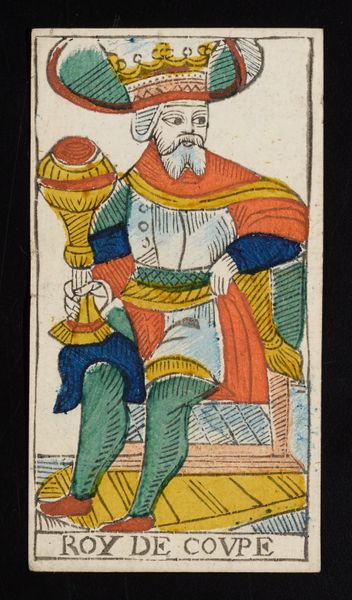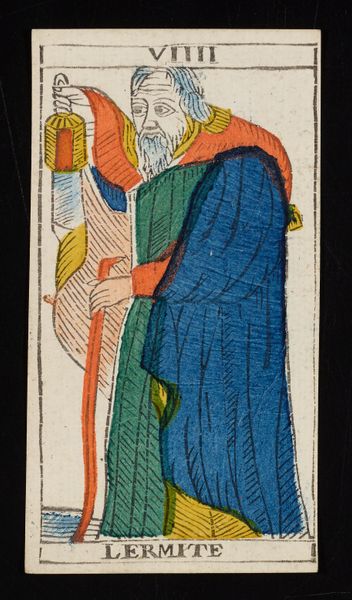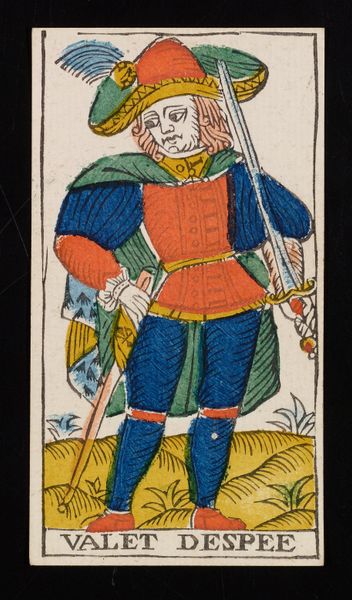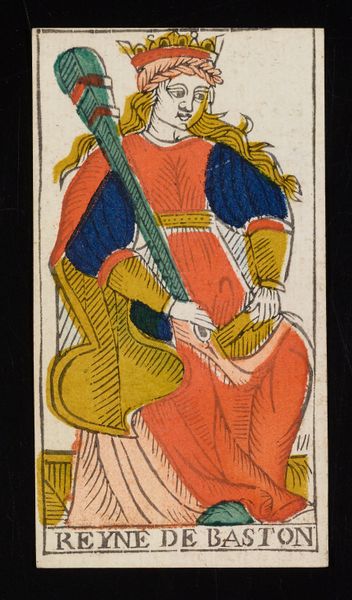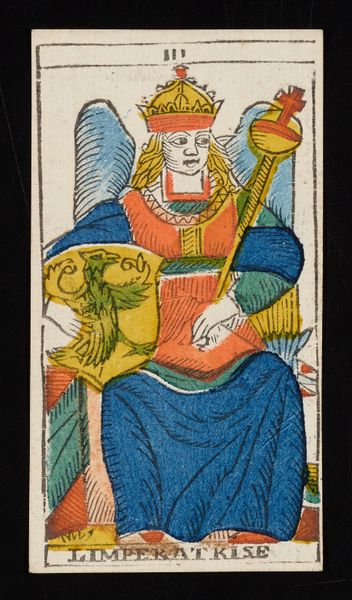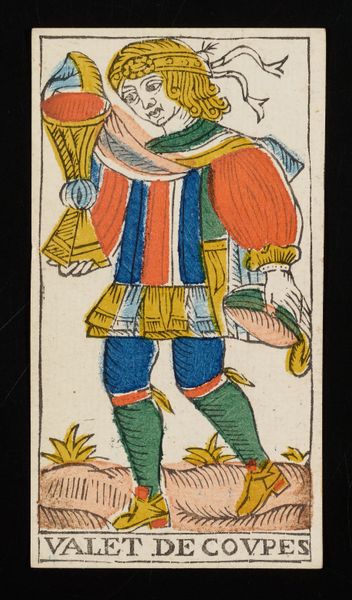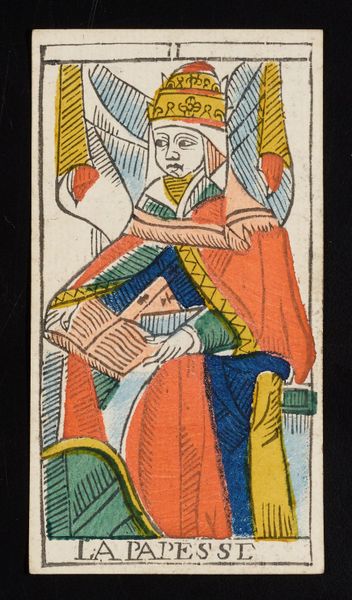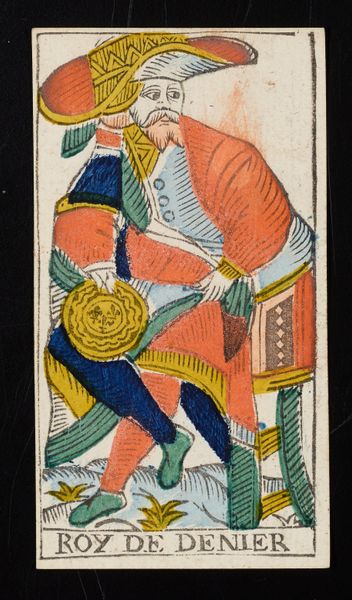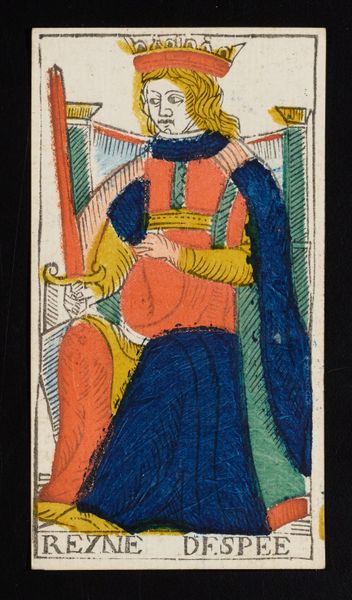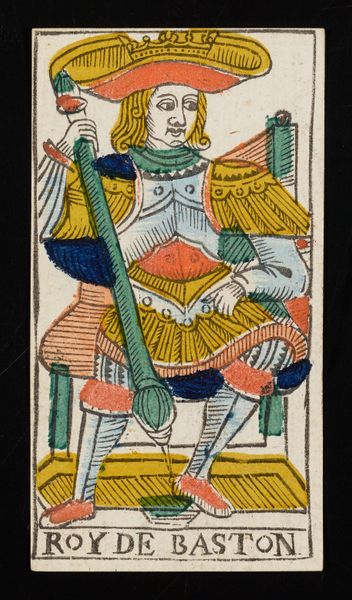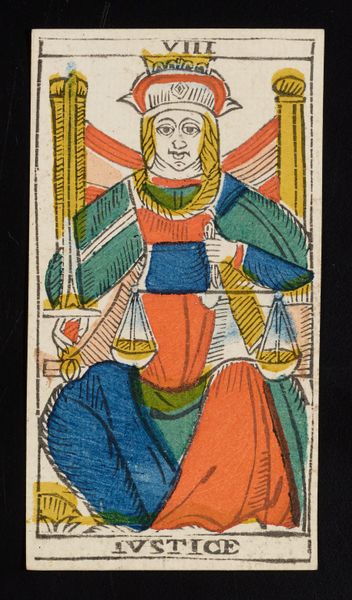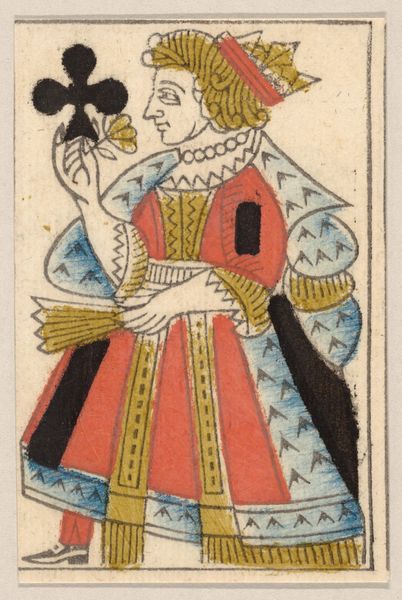
print, engraving
#
portrait
#
medieval
# print
#
figuration
#
engraving
Dimensions: 4 7/16 x 2 7/16 in. (11.27 x 6.19 cm) (image, sheet)4 5/8 x 2 1/2 in. (11.75 x 6.35 cm) (sheet, each)
Copyright: Public Domain
Curator: This is "The Pope," an engraving by Claude Burdel, dating back to 1751. It’s part of the Minneapolis Institute of Art’s collection. Editor: It looks like a tarot card! Immediately, the bold, flat colors jump out at me. Very graphic, almost like it's mass-produced. Curator: Well, that gets to an important point. Looking at it through a material lens, we need to remember that this is an engraving, a print. The affordability of prints played a vital role in disseminating imagery and influencing social beliefs. Consider the labor involved: the skilled engraver, the printing process, and the circulation networks. It moved art beyond unique handcrafted objects. Editor: Absolutely, the dissemination is crucial. The Pope was obviously a significant figure historically, both politically and culturally. This image likely played a role in shaping public perception and perhaps served specific political or religious agendas. Also, notice how the institutional display – here, in a museum – adds another layer of meaning, framing it as an artifact. Curator: Yes, and how does the material inform that? The very lines are physically etched with incredible pressure into the plate—this would necessitate training and significant investments into specialized tools. Its scale demands detailed, meticulous labor. And yet its inherent purpose requires it be reproduced en masse—labor to be seen by more. It walks this interesting line between unique skill and mass appeal. Editor: Interesting. It makes me think about how its reception may have changed. Originally used perhaps for propaganda or devotional practice, and now we examine its artistic or historical significance in the context of the museum. What does that say about shifting societal values and our relationship to imagery? Curator: It invites us to question our own consumption habits, doesn’t it? This once commonplace, cheaply produced image is now framed as high art—valued and studied. Editor: Right, from a piece designed for consumption to an artifact designed for institutional appreciation. Quite the journey, isn't it?
Comments
No comments
Be the first to comment and join the conversation on the ultimate creative platform.
